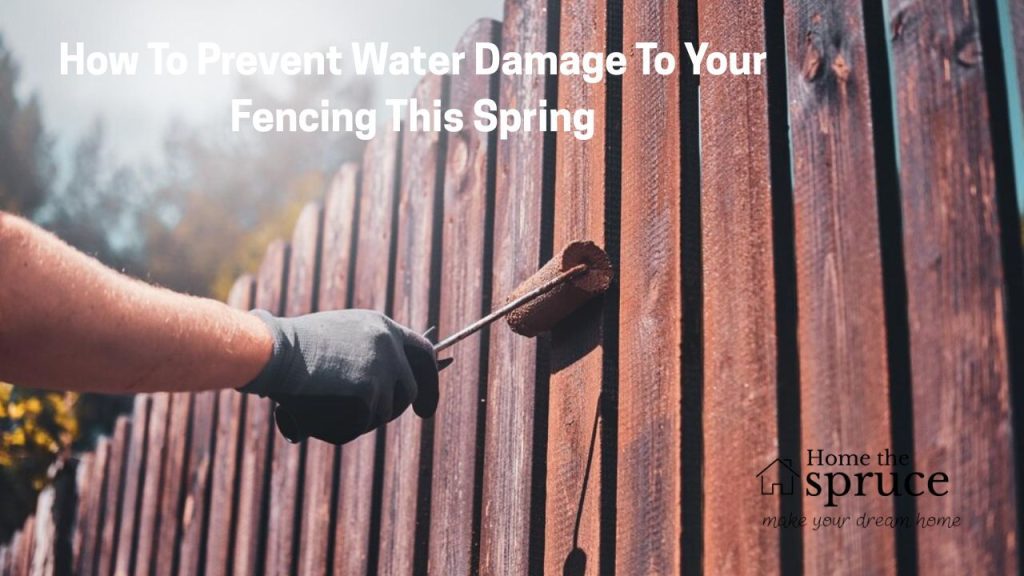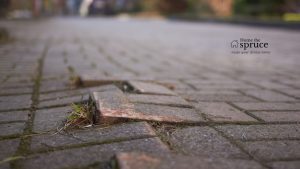With spring finally here, many of us are starting new outdoor projects in preparation to spend time in our garden over the summer.
Fencing repair and installation projects are among the most popular from May through September, and first-time homeowners may need to prepare for large fencing projects on their property.

But how can you sustain your new fence and protect it from damage or wear and tear? After all, a new fence should last anywhere from 20 to 25 years. Consider the following guidelines on keeping your fence in top shape this year.
What causes damage in most fences?
Below is a list of five of the most common causes of damage to your fence. While we are discussing mostly wooden fences, these issues and principles can be applied to any kind of fence on your property.
Warping
Warping, or the bending and curving of straight wooden planks is difficult to fix if it’s too far gone. Most often, it requires replacing damaged boards and tightening them to undamaged posts.
Common causes of fence warping is moisture exposure from inclement weather. Bad positioning and installation of slats and posts can also cause misshaped curving over time, and not using proper treatments on your wood to seal the surface can make the problem worse.
Rotting
Rotting is another form of serious damage that affects your fence from the inside out. The UK has a particularly wet environment, especially in the spring, making a perfectly damp environment for things like fungus to thrive inside timber.
It’s important to also consider if your fencing is positioned in a way that it’s touching damp soil and absorbing moisture from underground.
“Dry Rot” has the opposite effect, and most often occurs when fences exposed to excess sunlight over time dry out and begin cracking and breaking easily. This creates the perfect openings for water and pests like termites to make their way into the wood fibers.
Mildew
Much like the buildup found in your bathroom, mildew grows on fencing through a combination of damp weather conditions, shade, and humidity.
A common sign of mildew is the spreading of moss along the surface of your fencing or a slippery green growth between panels.
This affects the appearance and cleanliness of your fence and often requires thorough scrubbing and a new paint job to fix.
Discoloration
All of the previous damage mentioned, like excess sunlight, mould and mildew, moisture, and rot, can all cause staining and fading of your fence and affect the wood lining within. But this problem is not unique to wooden fences.
Even brick, metal, and vinyl fencing can also become stained if left overly exposed to any of these factors. Scrubbing, stripping, restaining, or even replacing portions of your fence altogether is often necessary to rectify the problem.
Broken posts or slats from wind and weather damage
Unfixed broken fencing can be a hazard that can promote further damage and breaking, and begin to rot. One of the best practices for maintaining your fence is to get any damage, no matter how small, repaired as quickly as possible.
How can I prevent water damage?
Strong and reliable materials
To ensure you have a solid foundation for your fence, you need to have the right materials. Using high-quality wood from expert merchants like MGM Timber ensure you have the proper fencing materials.
Always use a reputable timber source to purchase tools and materials that will build a durable and long-lasting fence worth the investment.
Proper installation techniques
Whether you are hiring a professional installation service or DIYing a project yourself, always make sure you are using proper installation techniques. Start by doing your research.
Have you checked to ensure the ground is properly prepared for installing posts? Is there a possibility for issues with your fence like excess water buildup on the lawn or excess shade or sun exposure? Can you realistically handle the scope of fencing your property or would you need professional assistance getting it done?
Considering potential issues and understanding how to prepare your property for installation will help make DIYing your fence or hiring a professional much easier.
Protective paint and coatings
To keep porous wood sealed and give it the best chance of withstanding any kind of rot, warping, or other damage, sealants and coatings are key. From proper priming and painting to wood sealing to block out moisture, be sure to take your time layering protective coatings that will sustain your fence over time.
Here are a few examples of coatings that help protect a wooden fence properly for damp environments:
- Wood stains
- Wood oils to protect against pests and water penetration
- Protective wood treatments
- Wood preservative solvents
Maintain your fencing area
A great way to minimise unnecessary damage and keep pests at bay is to simply maintain your lawn. This means regular mowing, removing overgrowth, and treating your grass to keep unwanted critters or damp soil from building up, especially during the rainiest months of the season.
This can include root removal, using gravel for water drainage, and debris removal from branches, dirt, and damp leaves.
Regularly check for necessary repairs
And finally, one of the best ways to maintain your fence is to take the time to check for any chipping, cracks, or minor damages that can easily accrue over time.
Observing closely the quality of the wood, paint, and sturdiness will help you handle small problems early and prevent them from growing into a bigger and more expensive repair down the line.
Conclusion
Maintaining a fence or installing one for the first time can seem like an overwhelming task. But really it just requires some care, attention and patience to fix problems as they come along. Take the time to care for your fence and prevent unnecessary damage, that way you’ll make the most of your install for as long as possible.
For more DIY tips on how to maintain your home’s exterior, check out our garden blog posts here.








